Maximize business potential with a strategic partnership organizational chart. This visual tool defines roles, responsibilities, and communication channels within your collaborative venture. Streamline operations and enhance productivity by implementing a clear hierarchy. Our comprehensive guide provides step-by-step instructions to help you create an efficient framework tailored to your specific business needs.
Elevate teamwork, clarify roles, and boost overall success with a product management org structure that maximizes cohesion and effectiveness in your business alliance.
Contents of this article
Part 1. What is a Partnership Organizational Chart?

An organizational chart for partnership business is like a map for businesses run by partners. It shows who's in charge of what, making sure everyone knows their role. Imagine it as a family tree but for a business.
At the top are the main partners, and below them, it breaks down who handles different tasks. This chart helps avoid confusion and keeps things running smoothly. It's a powerful tool for any partnership to stay organized and work together effectively.
- You may want to know: What Is An organizational chart and How does it Work
Part 2. Overview of Partnership Organizational Chart
Understanding the components of a product management organization structure is essential for establishing clear roles and responsibilities within a business venture.
- Partners: Founders or co-owners of the business.
- Management Roles: Shows who lead different departments.
- Roles and Responsibilities: Specifies tasks for each person.
- Communication Lines: Illustrates how information flows between partners and teams.
- Decision-Making Structure: Indicates how choices are made within the partnership.
- Hierarchy: Displays the levels of authority and reporting.
- Teams or Departments: Break down the organization into functional units.
- Special Projects or Committees: Highlights specific initiatives or focus areas.
This chart brings clarity, ensuring everyone knows their position and duties in the partnership.
Part 3. Understanding the Organizational Structure of Partnership Business
Examining the varied structures in partnership enterprises provides insights into the allocation of responsibilities and liabilities among partners. Here are the three different types of partnership organizational structures:
#1 General Partnership Organizational Structure
In a General Partnership, the structure is relatively simple.
All partners share equal responsibility and liability. They collectively make decisions and manage day-to-day operations. This structure fosters a high level of collaboration but also means that each partner has unlimited personal liability for the business's debts. It's a straightforward setup suitable for small, closely-knit ventures where partners have a high level of trust and shared decision-making.
#2 Limited Liability Partnership Organizational Structure
Limited Liability Partnerships (LLPs) offer a balance between shared responsibilities and personal protection.
In an LLP, some partners have limited liability, meaning they're not personally responsible for the business's debts or other partners' actions. This structure is common in professional service firms like law or accounting practices. It provides flexibility in management and allows partners to focus on their areas of expertise without being held liable for the entire business.
#3 Limited Partnership Organizational Structure
Limited Partnerships involve both general and limited partners. General partners manage the business and have personal liability, similar to a General Partnership.
However, limited partners have a more passive role, providing capital but not participating in day-to-day operations. They are only liable for the sum they have put into it. This structure is favored by investors who want to be involved in a venture but not burdened with operational duties, making it common in ventures with a clear division of labor and investment.
Part4. How Can a Business Benefit From a Partnership Org Chart
A business can benefit from a partnership organization chart in several ways.
Firstly, it provides clarity on roles and responsibilities, reducing conflicts and misunderstandings among partners.
It also fosters better communication and collaboration, ensuring that each partner understands their specific contributions.
Additionally, it helps in identifying gaps in skills or resources, allowing for strategic recruitment or allocation of resources.
Moreover, a well-structured organization chart can enhance decision-making processes and streamline operations, ultimately leading to increased efficiency and productivity within the partnership.
Part 5. Create an Org Structure of a Coffee Shop Using EdrawMax
Creating a Partnership Organizational Chart using Wondershare EdrawMax is a crucial step toward establishing clear lines of communication and accountability within a business venture. This great organization chart tool offers an intuitive and user-friendly platform that enables partners to visually represent the hierarchy and roles within their organization.
Moreover, Edrawmax's customizable templates and easy-to-use features streamline the process, saving valuable time and resources that can be better utilized towards driving the partnership's goals and objectives.
Here are the steps to create a partnership organizational chart using EdrawMax:
Step 1:
Open EdrawMax and go to File> New> Organizational Chart category. Choose a template that fits your business’s needs and requirements to get started.
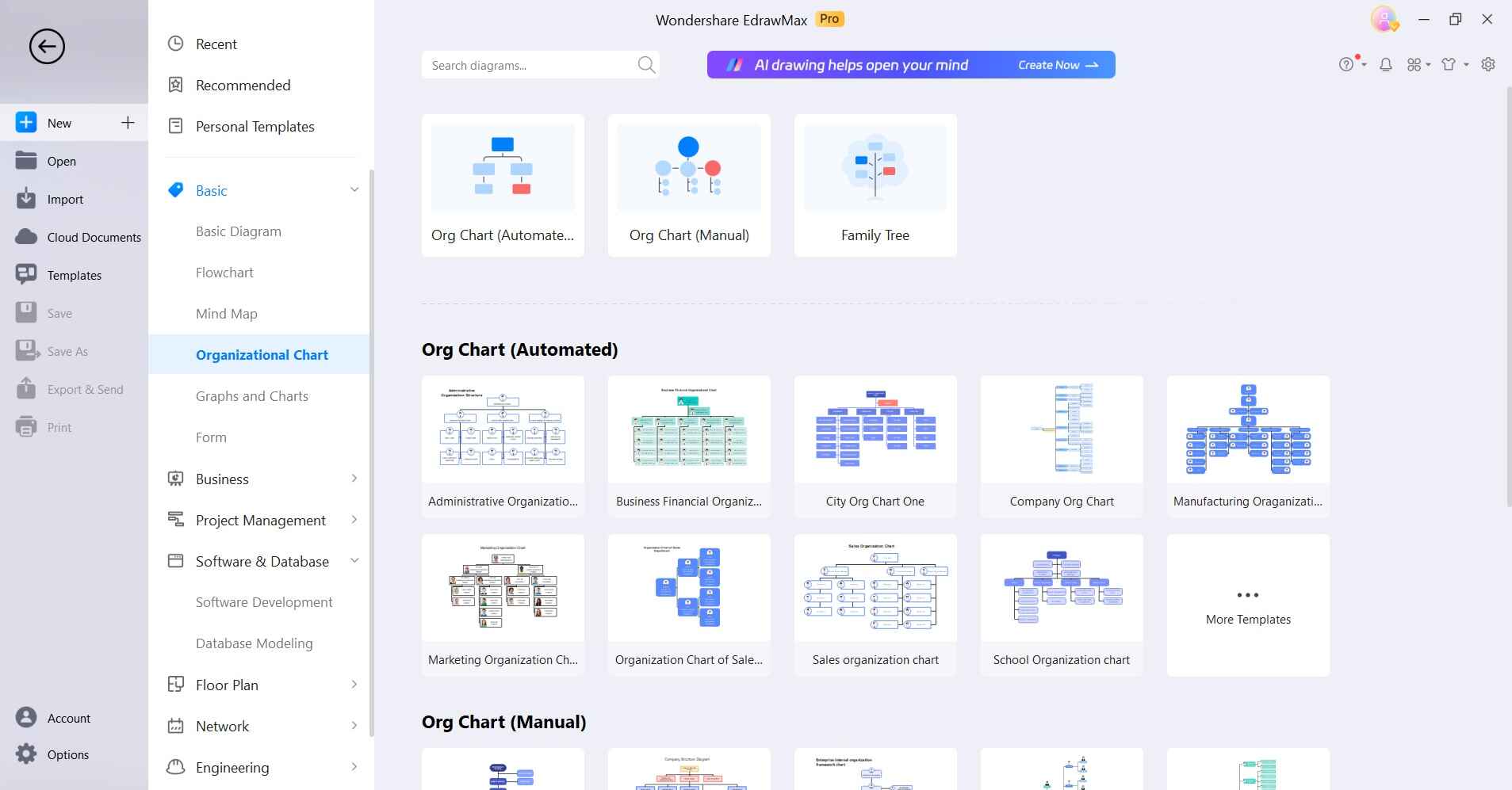
Step 2:
Begin by entering the names of the partners and their respective titles or roles in the provided boxes. You can simply click on a box and type to edit. Drag and drop additional boxes from the tool panel to add more partners or team members.
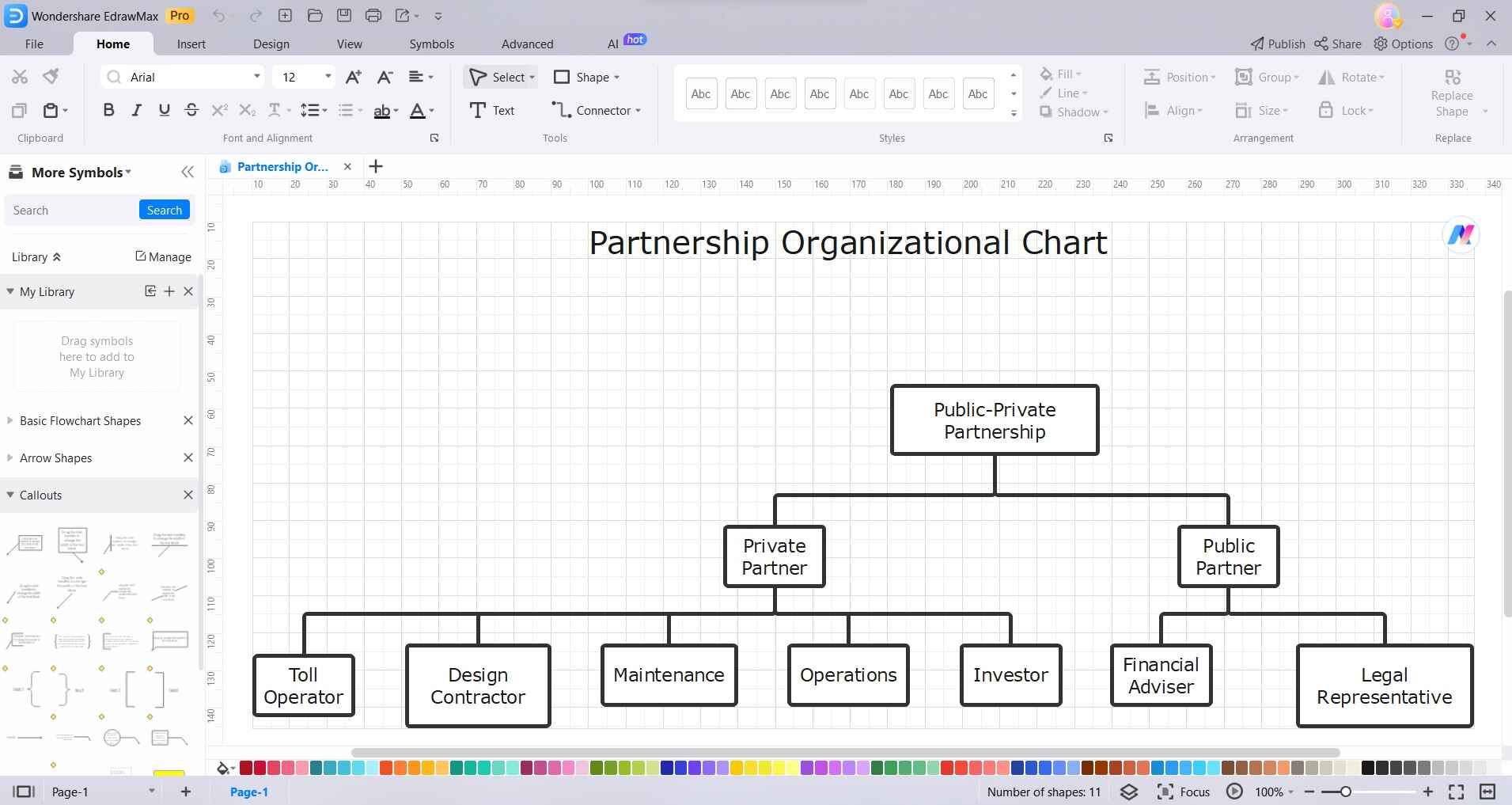
Step 3:
Use connecting lines to indicate reporting relationships. Click and drag from one box to another to create links. If applicable, add separate boxes for different departments or teams within the partnership. Connect them accordingly.
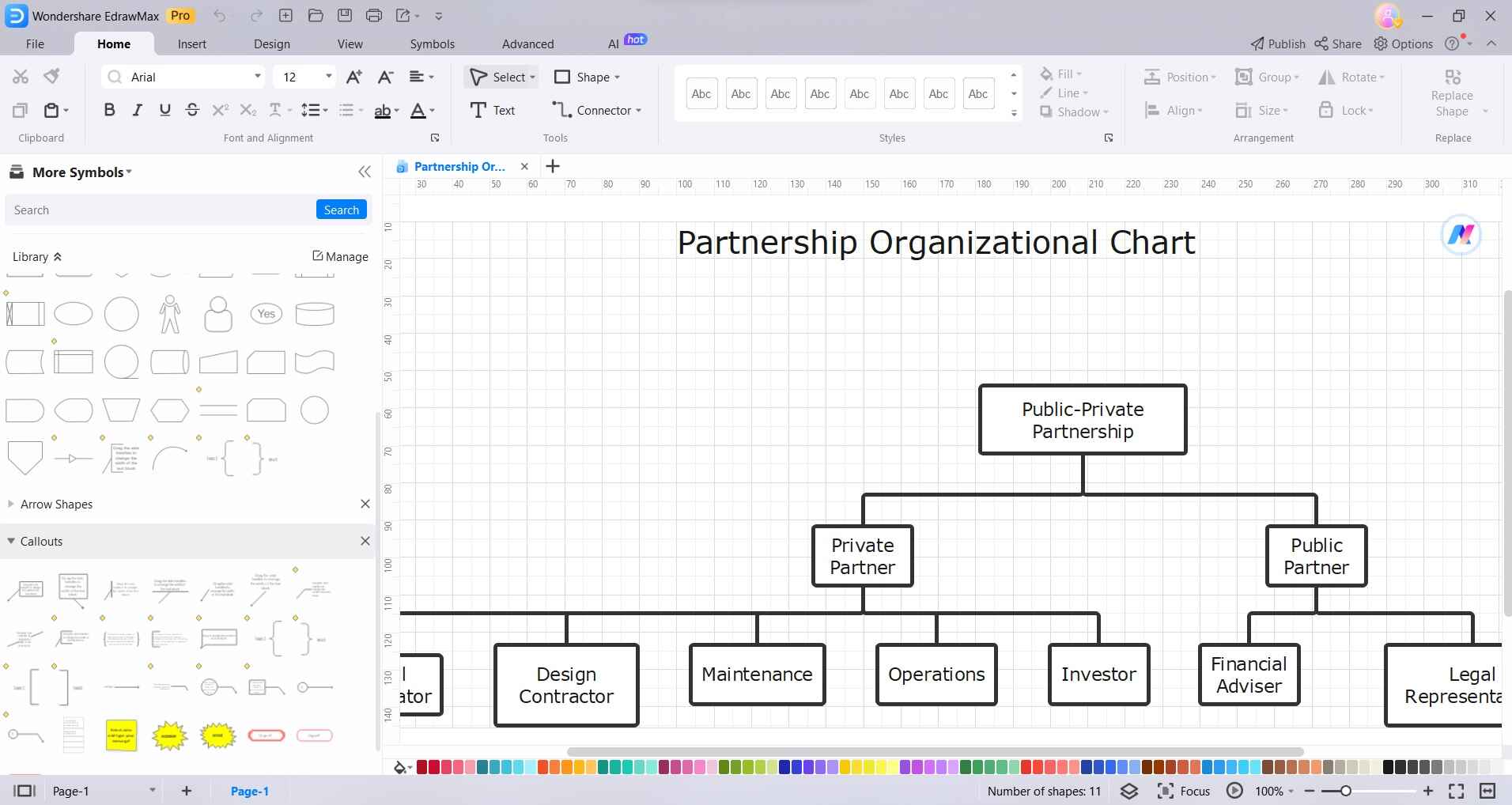
Step 4:
Customize the appearance of the chart using EdrawMax's formatting tools. Adjust colors, fonts, and shapes to match your branding or preferences.
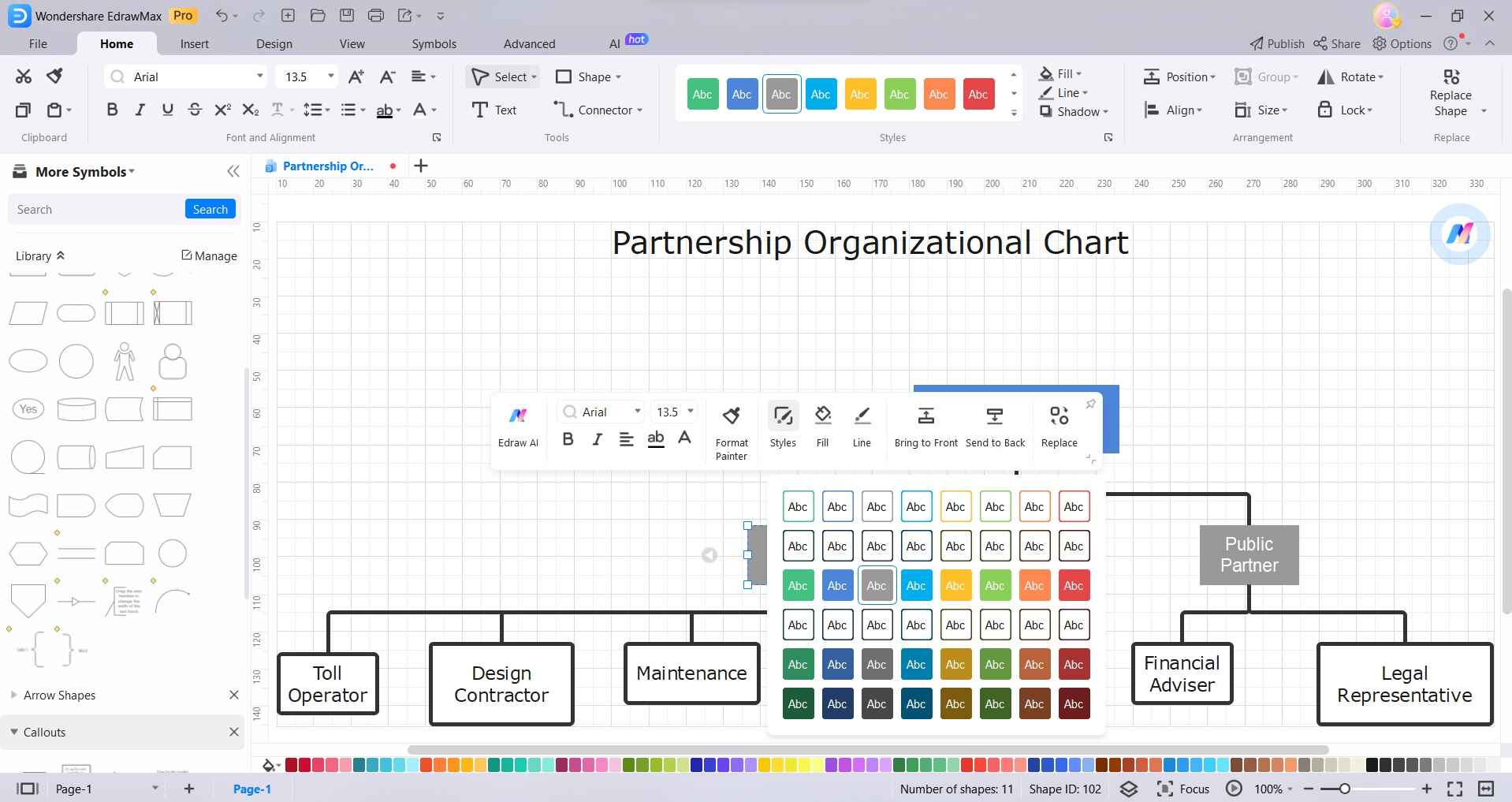
Step 5:
Once satisfied with the chart, save your work. EdrawMax supports various formats, including PNG, PDF, and Visio. Choose the one that suits your needs. Share the chart with the other partners for feedback and approval. EdrawMax allows easy sharing via email or cloud services.
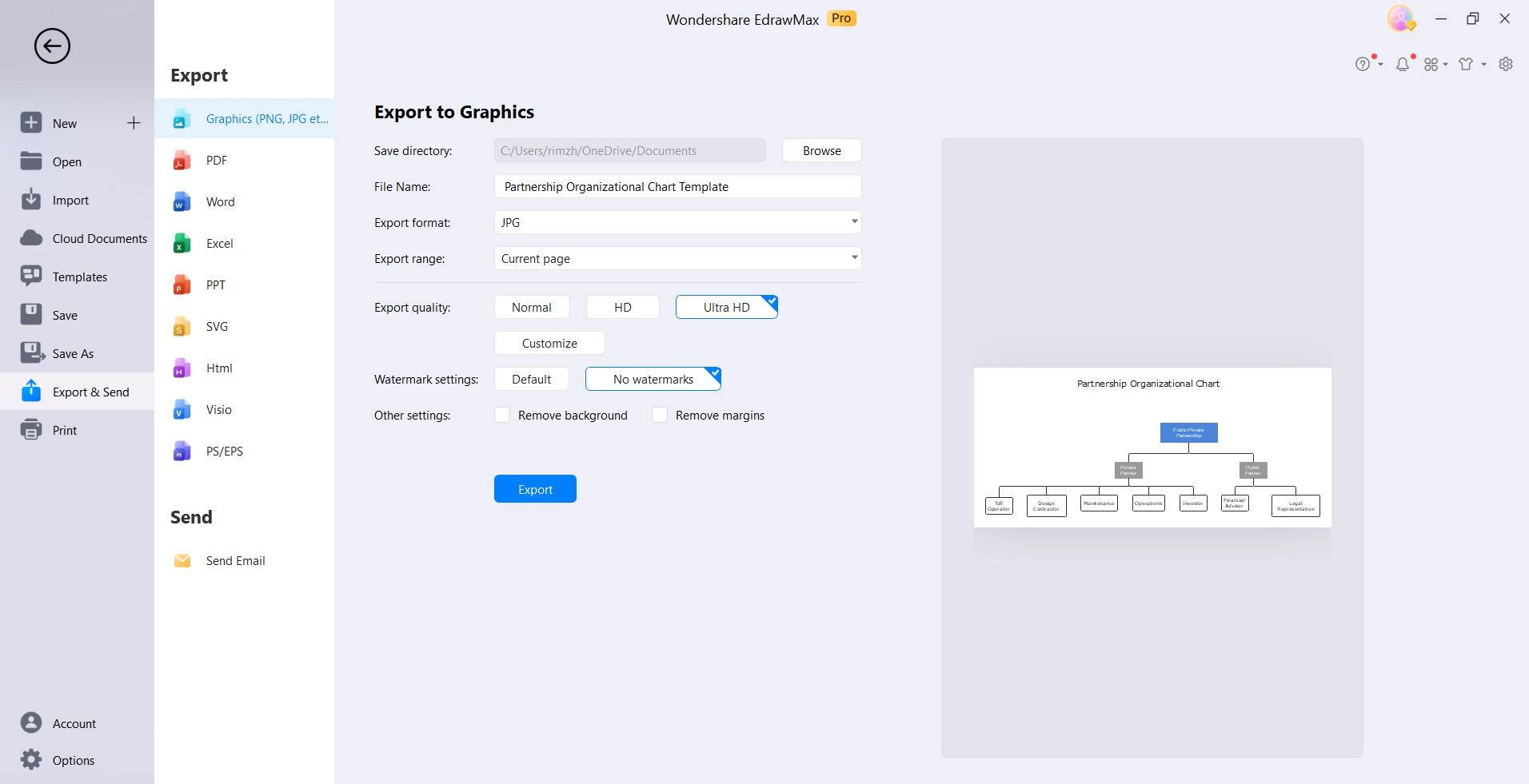
Step 6:
As the partnership evolves, return to EdrawMax to make any necessary adjustments. Add new partners, update roles, or make other modifications as required.
By following these steps, you can create a clear and visually appealing Organizational Chart for partnership businesses using EdrawMax.
Conclusion
A well-crafted Partnership Organizational Chart is the linchpin of a successful business alliance. EdrawMax proves to be an invaluable tool in this endeavor, offering an intuitive platform for creating visually compelling charts. This dynamic visual representation clarifies roles, responsibilities, and reporting lines, fostering seamless collaboration among partners.
With its user-friendly interface and customizable features, EdrawMax empowers businesses to adapt to evolving needs. Ultimately, a clear organizational structure lays the foundation for effective communication, efficient decision-making, and sustained growth in any partnership venture.




